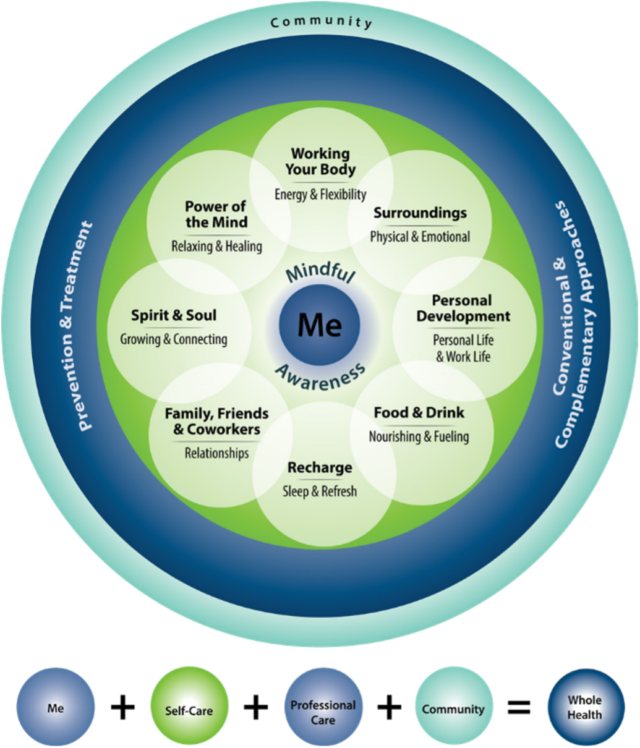 By Victor S. Sierpina, MD, WD and Laura Nell Nicholson Professor of Integrative Medicine, Professor of Family Medicine at UTMB-Health and the John Sealy School of Medicine.
By Victor S. Sierpina, MD, WD and Laura Nell Nicholson Professor of Integrative Medicine, Professor of Family Medicine at UTMB-Health and the John Sealy School of Medicine.
“Pay attention. Be astonished. Tell about it.” –Mary Oliver
Ask not “What is the matter with you?” Ask instead, “What matters to you?” This is a guiding mantra for the Veteran’s Administration Whole Health Program.
Practices such as acupuncture, yoga, massage, tai chi, clinical hypnosis, biofeedback, and others, are quickly growing treatment options for veterans receiving VA care.
At the recent 2022 International Congress on Integrative Medicine and Health in Phoenix, AZ, one of the most promising “disruptive technologies” that I encountered was the systems change effort at the VA through their Whole Health program.
Led by my long-term integrative medicine colleague and friend, Dr. Ben Kligler, and spearheaded here in Texas by Dr. John Finnell out of San Antonio, this nationwide effort strives to address unmet needs for pain management, mood problems, post-traumatic stress disorder, post-COVID care, as well as comprehensive health care.
As the graphic below shows, the Whole Health model of care is holistic, integrative, and functional, involving the full spectrum of health and wellness.

Body, mind, spirit, relationships, sleep, nutrition, work-life balance, and environmental factors are all considered from the perspective of keeping the person mindfully in the center of conventional and complementary approaches, prevention, with an emphasis on self-care coupled with professional and community-level interventions.
A personal health inventory includes identifying strengths and challenges in the domains described in the graphic. Furthermore, the following open-ended questions to be completed by the patient allow for personalized and precise goal setting:
- What do I want to be addressed at today’s visit?
- Why do I want to be healthy? How does being healthy support what matters most to me?
- My overall goals
- My self-care priorities
- Mission, Aspiration, or Purpose: What do I live for? What matters most to me?
- Major medical concerns and screenings
- Medications and supplements
- Professional care (conventional and complementary)
- My support team (family, friends, health team members)
- My education and skill-building
The Whole Health program is highly interdisciplinary and is being carefully studied and evaluated so models and methods can be validated, modified as needed, and scaled across the VA system. The exciting part for me is that if the VA can show this Whole Person/Whole Health clinical program is efficacious and cost-effective, it has enormous potential to penetrate other components of the health care and hospital systems. Optimistically, it has the power to influence payor behaviors to cover, perhaps by bundling, a more complete suite of integrative therapies, techniques, and practitioners.
This can reduce the burden of suffering on an individual and family level and offer real-world savings in reduced procedures, medication use and abuse, hospitalizations, and improved mental health. A term used here is cost substitution. Integrative interventions prevented downstream ballooning of healthcare costs. Pay a dime now or a dollar later.
An example of their data showed how using cognitive behavioral coaching therapy for chronic low back pain resulted in an 87.4% success rate in reducing pain. Acupuncture showed 68% functional and clinically significant improvements. Another study on back pain using these combined therapies reduced procedural interventions and surgery by 47%. Arguably in some health systems, this would not be seen as a positive as it reduces rates of highly reimbursed procedures. For the VA, clearly, it was a cost-saving.
Dr. Kligler and a team of his colleagues presented several sessions and abstracts that carefully detailed their progress and experiences with this program. Topics included: “From Disease to Whole Person: Transforming the Approach to Healthcare in VA”; Complementary and Integrative Effectiveness and Implementation in the VA; and additional abstracts covered Whole Health peer-led groups, the role of chiropractic care, veterans’ use of the healthcare system provided complementary and integrative health activities, strategies for encouraging the use of these therapies including expanding access for these services for veterans.
Whole Health is a well-orchestrated, well-planned, well-researched system-wide effort to improve the care of veterans across the nation using teams and utilizing a full spectrum of integrative approaches and determining the most evidence-based but also accessible, acceptable, and deliverable efficacious methods.
The model of interdisciplinary care is particularly powerful in its difficulty to treat such conditions as chronic pain, resistant depression, and post-traumatic stress disorder that is commonly seen in wounded veterans. Applying multiple integrative methods and a team approach can often help when nothing else has been effective. Making it work in a far-flung, complex government program will be nothing less than revolutionary.
For further information see: https://www.va.gov/wholehealth/


